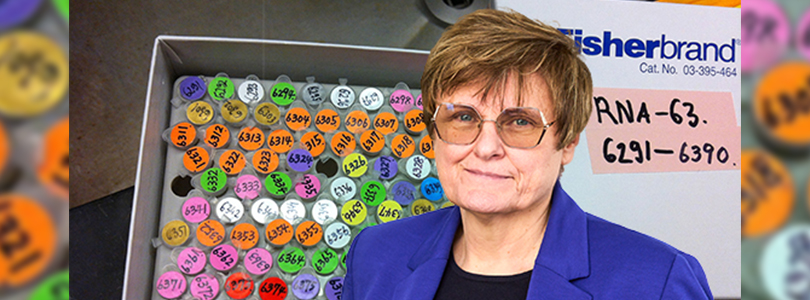Content
European Inventor Award for “phenomenal lifetime achievement”

Katalin Karikó
DPMA President congratulates mRNA pioneer Katalin Karikó on being recognised by the European Patent Office in the “Lifetime achievement” category – the scientist was a trailblazer for the COVID-19-vaccine – German inventors among the finalists in other categories
Press release of June 21, 2022
Munich. The President of the German Patent and Trade Mark Office, Cornelia Rudloff-Schäffer, warmly congratulates Katalin Karikó, biochemist and mRNA pioneer, on receiving the European Inventor Award in the “Lifetime achievement” category. “Katalin Karikó’s outstanding innovations in mRNA technology are a phenomenal lifetime achievement. She has showed that scientific excellence combined with tenaciousness and conviction can lead to great things,” the DPMA President said, and added: “The COVID-19 vaccine co-developed by Ms Karikó on this basis at BioNTech in Mainz is a key instrument for mitigating the COVID-19 pandemic. And it is quite possible that the mRNA technology will make further ground-breaking progress in medicine possible.”
Medical breakthrough at BioNTech in Mainz
For more than 40 years, Ms Karikó has been doing research into the therapeutic potential of mRNA. She was born in Szolnok, a small town in Hungary, and studied biology at the University of Szeged, where she also received her PhD. Subsequently, she emigrated to the United States and conducted research at Temple University in Philadelphia and at the medical school of the University of Pennsylvania, where she worked with immunologist Drew Weissman. They had great success in doing mRNA research and applied for ground-breaking patents.
Ms Karikó’s medical breakthrough came after she had joined the Mainz-based company BioNTech in 2013. BioNTech and the US group Pfizer were working on an mRNA-based flu vaccine. When the news about the emerging COVID-19 pandemic started to spread, the company focused its development activity on COVID-19. The vaccine developed that way is now used worldwide.
In addition to the lifetime achievement recognition, the European Patent Office presented the award in four other categories during an online live event: Industry, Research, Non-EPO countries and SMEs. The Popular Prize was awarded again too. This year, there was also an award for young inventors.
German engineers and a cellist shortlisted as finalists
Although there were no German winners this year, several German inventors were among the finalists. In the “Industry” category, the engineers Frank Herre, Hans-Georg Fritz, Timo Beyl, Marcus Kleiner and Benjamin Wöhr, of Dürr Systems AG, were among the three nominated teams. They have developed an automated automotive paint system that applies paint in such a manner that it is possible to reduce the amount of paint and energy needed by 20% and 30%, respectively, and to better respond to individual customer requests. In the “SMEs” category, Joachim Fiedler (of Fidlock GmbH), a German inventor and cellist, was nominated. He has developed innovative fasteners that combine magnets with a mechanical closing device, so they can easily be opened with one hand.
“The European Inventor Award recognises persons of outstanding merit from our European innovation system and beyond. I congratulate all winners and the finalists on the important achievements in their research,” the DPMA President emphasised.
The German Patent and Trade Mark Office
Inventiveness and creativity need effective protection. The DPMA is the German centre of expertise for all intellectual property rights – patents, utility models, trade marks and designs. As the largest national patent office in Europe and the fifth largest national patent office in the world, our office stands for the future of Germany as a country of inventors in a globalised economy. Its staff of just under 2,800 at three locations – Munich, Jena and Berlin – provide services to inventors and companies. They implement federal innovation strategies and develop the national, European and international IP systems further.
Picture: European Patent Office
Last updated: 21 June 2022

Not only protecting innovations
Social Media